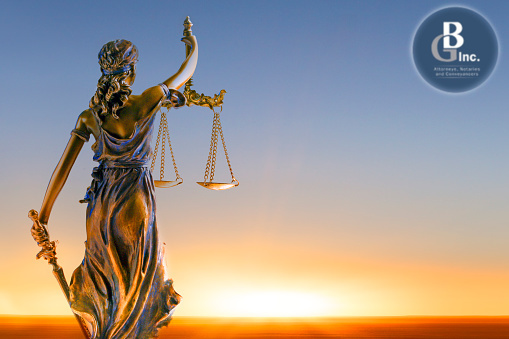PIERCING THE TRUST VENEER – NOT SO FAST
Our law lends credence to the concept of separate legal personality of juristic persons, resulting in them acquiring the capacity to enter into agreements, sue and be sued in their own right, independent of the natural persons behind them (Directors and/or Shareholders). However, this has sometimes resulted in the separate legal personality of juristic persons being abused by the natural persons behind them, in conduct that include fraud and dishonesty. Regardless, our courts do not easily disregard the separate legal personality of juristic persons (piercing the veil); sufficient cause must be presented before this can be done. In this article we shall discuss one such case, where it was held that the plaintiff had failed to discharge the onus to convince the court why the veil must be pierced.
In the famous case of Salomon v Salomon [1897] A.C 22 the concept of separate legal personality of juristic persons, was explained in sufficient detail. As alluded to above, the concept of separate legal personality of juristic persons (e.g companies) has been abused in some instances to commit fraud, improper conduct and dishonesty. This then invites a necessity to disregard the separate legal personality of the entity and ‘pierce the veil’ in order to impute liability on those behind it. Regardless, due to how this concept is entrenched in our law, our courts exercise the discretion on whether to ‘pierce the veil’ or not, with the utmost caution. Sufficient cause must be presented first.
The onus to convince the courts to ‘pierce the veil’ on a juristic person is not an easy task to discharge. In the recently decided case of MJ K v II K [2022] ZASCA 116 (28 July 2022), the Supreme Court of Appeal (SCA) made a finding in favour of the appellant, citing that the respondent had failed (before the High Court) to premise her case on the important principles for the veneer of a trust to be pierced. In this case the respondent had alleged that the appellant had transferred assets to three (3) trusts being the Koens Beisgheids Trust, Koens Familie Trust, Bulhoek Trust (the trusts) and the Olivia Wildplaas Close Corporation (the CC). The respondent further alleged that the transfer of the assets had in some instances been made at no value in consideration, to deprive the respondent the accurate calculation of accrual value as per Sections 3 and 4 of the Matrimonial Property Act 88 of 1984 (MPA). The spouses were married out-of-community of property subject to the accrual system. Before the High Court (Free State division) the respondent pleaded that the appellant was in complete control of the trust assets, that the income and expenditure of the trusts and the CC were not separate from the appellant’s personal finances, and that the antenuptial contract (ANC) did not expressly exclude the trust assets from being regarded as part of the accrual. The High Court held that the veneer of the trusts and CC must be pierced as the appellant had used them as his alter ego and, had established them and transferred assets to them upon discovering the infidelity of the respondent. The latter conduct, the High Court concluded, indicated that the appellant had the aim to avoid obligations towards the accrual of his estate.
The SCA disagreed, and upheld the submission of the appellant that the High Court strayed beyond the issues that were before it. The SCA held that there was no improper intent in the motive to establish the trusts and the CC, subsequently transferring the assets to them. The SCA held that the respondent had not premised her argument on, nor proven, that the appellant had, by establishing the trusts and the CC and subsequently transferring the assets to them, acted dishonestly and fraudulently in order to avoid his obligations towards the accrual of his estate, which principles are crucial in exercising the discretion to pierce the corporate veil (trust veneer in this case). The respondent’s case before the High Court had been hinged on the fact that the trusts and CC were the alter ego of the appellant and that he was in effective and sole control of the assets of the trust and the CC. Therefore, the SCA decided that the assets must not be included in the calculation of the accrual of the appellant’s estate.
To understand the judgment above in another perspective, reference may be made to the case of PAF v SCF (788/2020) [2022] ZASCA 101 where the Supreme Court of Appeal (SCA) held that the transactions that the appellant had made towards a trust and to his father, be included in the calculation of his estate. The appellant had established a trust in 2015, with his brother as the main trustee. Pursuant thereto he concluded a donation towards the trust, wherein his minor child was the only beneficiary. Upon knowing of the transaction, together with another made by the appellant to his father (seemingly of a decades old debt), the respondent amended her pleadings to have the transactions included in the accrual of the appellant’s estate. It was proven before the High Court that despite the spouse’s minor child being the only beneficiary, they were created without her knowledge, which is strange especially because the respondent would naturally have a real interest in knowing that which will benefit her minor child. Further, the appellant had made the donations (with one being a decades old debt to his father) soon after establishing the trust, which the respondent had no knowledge of. This indicated dishonest and fraudulent motives, resulting in the SCA dismissing the appeal citing that there are no prospects of success.
In conclusion, it is clear from the above judgments that in court proceedings to request that the veneer of a trust be pierced / corporate veil be pierced, one must show that the motives behind the conduct were dishonest, improper and/or fraudulent. It is not enough to only show that because the trust founder was in effective control of the trust and its assets, it was used as his alter ego, without showing intent of dishonesty and fraud on the part of the trustee.
We assist in a wide range of legal services including family law, and we are available to consult with parties in order to receive their full instructions in this respect. Contact us for comprehensive assistance.
The information contained in this site is provided for informational purposes only, and should not be construed as legal advice on any subject matter. One should not act or refrain from acting on the basis of any content included in this site without seeking legal or other professional advice. The contents of this site contain general information and may not reflect current legal developments or address one’s situation. We disclaim all liability for actions one may take or fail to take based on any content on this site.

